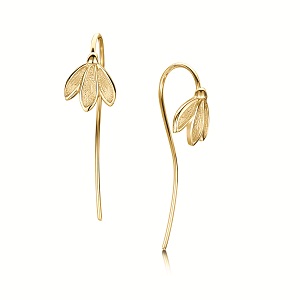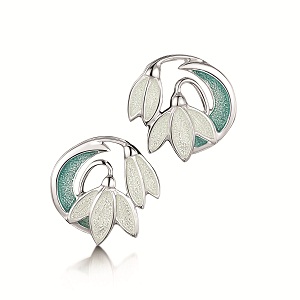About Robert Burns
The Life Story of Robert Burns (1759-1796)
Robert Burns was a Scottish poet and lyricistist, widely acknowledged as the national poet of Scotland and Britain's greatest songwriter, and the man who, if he did not actually create it in its entirety, pieced together "Auld Lang Syne". He is regarded as a pioneer of the Romantic movement, and after his death he became a great source of inspiration to the founders of both liberalism and socialism. A cultural icon in Scotland and among Scots around the world, celebration of his life and work became almost a national charismatic cult during the 19th and 20th centuries.
The Early Years
Robert's family originally came from Kincardineshire where they were tenant farmers. They moved to Ayrshire in 1750.William Burness (Roberts father) married Agnes Broun the daughter of a tenant farmer in the area, who at 24 was 12 years younger than him. Robert was born on the 25th January 1759 and was their first born son.The family lived in Alloway near the county town of Ayr in a house that was built by William, on a holding of 71/2 acres. This cosy home was where Robert first heard readings of the Bible and the folk songs of Scotland from the pleasing voice of his mother. An elderly widowed relative called Betty Davidson stimulated young Robert's imagination with tales and songs about devils, ghosts, fairies, brownies, witches, warlocks and all sorts of other imaginary creatures Roberts father was a man of strong character who knew the value of a good education. Although the family were not well off Robert and his brother Gilbert were given the opportunity to broaden their knowledge by means of a private tutor. This tutor John Murdoch remarked of Burns, "made rapid progress in reading and was just tolerable in writing". Although his writing potential seems to have gone unnoticed at this early age, his mind was obviously hungry for knowledge and his immense powers of observation were being cultivated.
At 15 years of age Robert had spent a good part of his youth helping his father on the farm and was in a position of responsibility. It was at this young age Robert wrote his first poem, "Handsome Nell," for Helen Kilpatrick of Dalrymple a bewitching creature for whom he first "committe the sin of rhyme".
"For my own part I had never had the least thought or inclination of turning Poet till I got once heartily in Love, and then Rhyme and Song were, in a manner, the spontaneous language of my heart." Entry in Common Place Book, 1783-1785. So it was Roberts eye for the lassies that provided the inspiration for his first poem. What a debt mankind owes to Helen Kilpatrick and all the other lassies that caught his eye. During his short life, of 37 years, Robert Burns penned such beautiful poetry and songs that it was said "even the angels would weep at their beauty".
In 1777 the Burns family moved to a 130 acre farm in Lochlie. Robert spent his 19th summer learning surveying, and he made good progress until he was diverted from his studies by the attractions of a local fillette. He also became chairman of a local debating club, and joined the local Masonic Lodge in 1781. He worked for a time as a flax dresser in Irvine, where he lost all his possessions in a house fire. He returned to Lochlie when his father became ill, and when his father died in 1784, Burns took the lease on Mossgiel farm near Mauchline with his brother, Gilbert.
 Click for the Robert Burns Collection |  Click for the Robert Burns Collection |
At 15 years of age Robert had spent a good part of his youth helping his father on the farm and was in a position of responsibility. It was at this young age Robert wrote his first poem, "Handsome Nell," for Helen Kilpatrick of Dalrymple a bewitching creature for whom he first "committe the sin of rhyme".
"For my own part I had never had the least thought or inclination of turning Poet till I got once heartily in Love, and then Rhyme and Song were, in a manner, the spontaneous language of my heart." Entry in Common Place Book, 1783-1785. So it was Roberts eye for the lassies that provided the inspiration for his first poem. What a debt mankind owes to Helen Kilpatrick and all the other lassies that caught his eye. During his short life, of 37 years, Robert Burns penned such beautiful poetry and songs that it was said "even the angels would weep at their beauty".
In 1777 the Burns family moved to a 130 acre farm in Lochlie. Robert spent his 19th summer learning surveying, and he made good progress until he was diverted from his studies by the attractions of a local fillette. He also became chairman of a local debating club, and joined the local Masonic Lodge in 1781. He worked for a time as a flax dresser in Irvine, where he lost all his possessions in a house fire. He returned to Lochlie when his father became ill, and when his father died in 1784, Burns took the lease on Mossgiel farm near Mauchline with his brother, Gilbert.
Affairs of the Heart and Literary Success
Affairs with various women led to the birth of a daughter by Elizabeth Paton, welcomed into the world by "A Poet's Welcome to a Bastart Wean," children by Jenny Clow and Ann Park, and twins by Jean Armour, whose father issued a writ against him. He resolved to emigrate to the West Indies, probably intending to take the "Highland Mary" of his poems, Mary Campbell, with him, and, looking for ways of raising £20 for the fare, decided to try to publish his poems, which he had been collecting in a commonplace book since 1783. Poems Chiefly in the Scots Dialect was printed by his fellow-mason John Wilson of Kilmarnock in 1786, and proved successful, attracting critical acclaim and an invitation from Dr Blacklock to visit Edinburgh in order to prepare a second edition, which appeared in the following year. Publication was again arranged through his Masonic connections.
With the proceeds from this edition he secured the lease on Ellisland farm in Nithsdale in 1788, where Jean Armour joined him as his wife. In Edinburgh he had begun collecting and revising Scottish folk songs and ballads, in association first with James Johnson and later with George Thomson. Johnson's The Scots Musical Museum, published in six volumes between 1787 and 1803, included some 160 of Burns compositions, for which he consistently refused any form of payment, regarding the work as an honour and a patriotic duty.
From 1789 Burns worked as an Exciseman for the Excise Division in Dumfries, a position secured for him by James Cunningham, the Earl of Glencairn (another mason). George Thomson's A Select Collection Of Scottish Airs was published in six volumes between 1793 and 1841, and included 114 songs by Burns.
With the proceeds from this edition he secured the lease on Ellisland farm in Nithsdale in 1788, where Jean Armour joined him as his wife. In Edinburgh he had begun collecting and revising Scottish folk songs and ballads, in association first with James Johnson and later with George Thomson. Johnson's The Scots Musical Museum, published in six volumes between 1787 and 1803, included some 160 of Burns compositions, for which he consistently refused any form of payment, regarding the work as an honour and a patriotic duty.
From 1789 Burns worked as an Exciseman for the Excise Division in Dumfries, a position secured for him by James Cunningham, the Earl of Glencairn (another mason). George Thomson's A Select Collection Of Scottish Airs was published in six volumes between 1793 and 1841, and included 114 songs by Burns.
Failing Health and Death
As his health began to give way, Burns began to age prematurely and fell into fits of despondency. Habits of intemperance and a possible long-standing rheumatic heart condition may have contributed to his decline. His death followed a dental extraction in winter 1795.
On the morning of 21 July 1796, Robert Burns died in Dumfries at the age of 37. The funeral took place on Monday 25 July 1796, the day that his son Maxwell was born. He was at first buried in the far corner of St. Michael's Churchyard in Dumfries; his body was eventually moved in September 1815 to its final resting place, in the same cemetery, the Burns Mausoleum. Jean Armour was laid to rest with him in 1834.
On the morning of 21 July 1796, Robert Burns died in Dumfries at the age of 37. The funeral took place on Monday 25 July 1796, the day that his son Maxwell was born. He was at first buried in the far corner of St. Michael's Churchyard in Dumfries; his body was eventually moved in September 1815 to its final resting place, in the same cemetery, the Burns Mausoleum. Jean Armour was laid to rest with him in 1834.
















